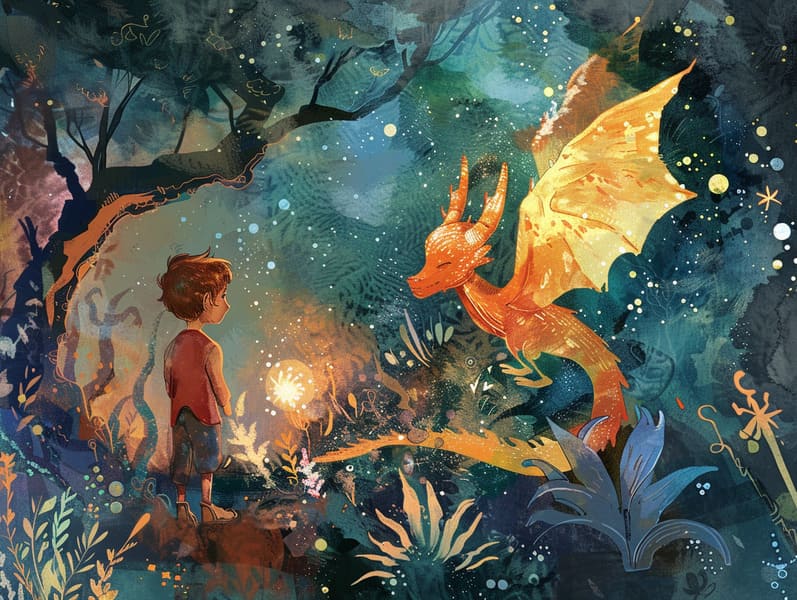
Classic fairy tales have historical significance. These stories have been passed down from one generation to the next long before they were ever published. They arose from a variety of cultures, including African traditions. They were initially disseminated among older generations, often carrying themes and messages related to the societal norms and beliefs of the time.
The Brothers Grimm, the two Grimm brothers, were among the first to assemble many of these beloved fairy tales. Their compilation, "Grimm's Fairy Tales," included stories like "The True Bride," "The Story of Hansel and Gretel," and "Snow White," which have since become classics in the world of timeless fairy tales. Similarly, Hans Andersen's fantastical fairy tales, such as "The Mermaid," and "The Duckling's Story," have stolen hearts worldwide, solidifying their place in the pantheon of classic fairy tales.
Though they are centuries old, classic fairy tales remain as important as ever, especially as kids' bedtime tales. These enchanting tales are now available in various formats, including vividly illustrated books, enchanting animations, and web-based fairy tales.
Their persistent charm can be connected to several fascinating points:
Valuable Lessons: Traditional fairy tales often present important moral lessons. Narratives like "The Wolf and the Liar" teach the benefit of truth, while "The Hare and the Tortoise" illustrate the traits of tenacity and meekness. These tales offer young ones clear distinctions between virtue and vice, shaping their moral compass in a mild yet profound way.
Empathy and Awareness: Old fairy tales frequently illustrate heroes facing problems and hurdles, motivating audiences to understand with their struggles and back their triumphs. For instance, "The Tale of Beauty and the Beast" demonstrates the significance of valuing inner qualities to see the real person of a being, cultivating perception and understanding.
Cultural Awareness: Many traditional fairy tales are saturated in the cultural contexts from which they arose. Delving into these narratives can provide enlightening views into different societies, building a sense of international awareness and awareness.
Creativity and Fantasy: The magical elements in old fairy tales—spells and potions—revitalize children’s inventiveness. These stories guide readers to fantastical realms, stimulating fantastical thinking and a sense of enchantment that stays a lifetime.
Ancient fairy tales are not only whimsical but also informative. They serve as fascinating tools in enhancing various cognitive and affective skills in little ones. When fairy tales are recited, they boost language proficiency by showing new phrases and intricate sentence structures. This practice also improves listening skills and focus, as children focus on every detail, prepared to see what happens next.
Furthermore, discussing the themes and characters of classic fairy tales can strengthen intellectual skills and thinking skills. Children are instructed to discover patterns, predict happenings, and know cause and effect. These debates also further children articulate their thoughts and feelings, cultivating their emotional intelligence.
In today’s technological era, the prevalence of online storybooks has made these fairy tales more obtainable than ever. Digital sites and web apps offer wide arrays of bedtime fairy tales that can be looked at or listened via anytime, anywhere. Fairy tales narrated are particularly sought after, featuring an interactive way for the young to enjoy these captivating stories. Audiobooks and read-to-me stories lead characters and settings to life, often accompanied by bewitching musical scores and songs that amplify the narrative adventure.
The everlasting appeal of classic fairy tales lies in their ability to change to modern times while maintaining their central values. Contemporary takes of these stories often showcase more inclusive figures and modern settings, making them understandable to today’s audience. However, the main ideas of bravery, warmth, and fair play remain unchanged, continuing to influence kids of all ages.
Old fairy tales also offer a sense of familiarity and familiarity. They put out a ordered narrative with a transparent beginning, middle, and end, often winding up with the finalization of conflicts and the triumph of justice over injustice. This reliability can be heartening for children, spreading a sense of unwaveringness in an unstable world.
Old fairy tales continue to captivate and train new generations, maintaining their attraction and importance in modern society. As bedtime stories for kids, they afford a perfect blend of fascination and comprehension, backing moral values, empathy, and creativity. The presence of digital fairy tales and the well-liked nature of fairy tales told out loud guarantee that these classic fairy tales remain attainable to new generations.
By safeguarding and relating these narratives, we continue to recognize the rich tapestry of folklore and cultural heritage. Whether you are reading a artistically illustrated book, accessing a online library, or playing an spoken story, the elegance of popular fairy tales is always within reach. These tales emphasize of the immortal influence of narratives and its ability to tie us across eras and regions.
Regardless if you are reading a artistically illustrated book, accessing a virtual collection, or playing an audiobook, the fascination awesome site of famous fairy tales is always within reach.
These stories illustrate of the unwavering power of storytelling and its ability to unite us across time and space, establishing a link that fascinates and enlightens alike.
Comments on “The Rise of Popular Fairy Tales and Its Timeless Loveliness.”